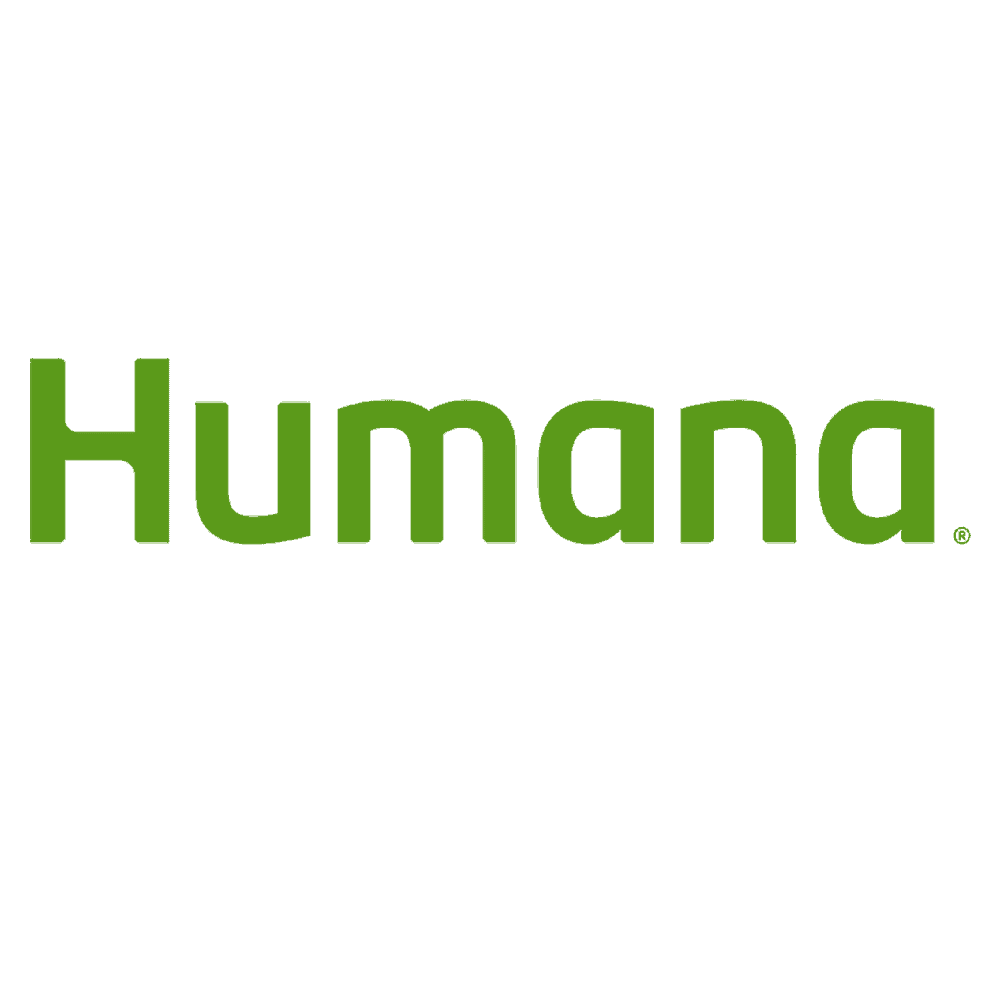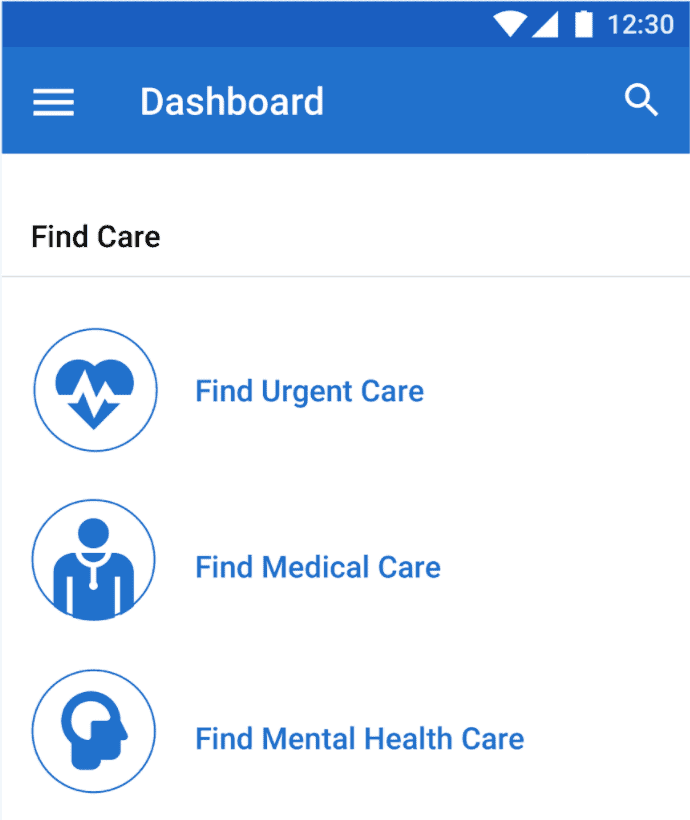
Cigna Medicare Supplement Plan Reviews in 2025

As a Fortune 500 company serving millions of customers, Cigna is one of the big names in the health insurance industry. Their Medicare Supplement plans offer competitive pricing with some solid discount opportunities; plus, you get 24/7 access to licensed nurses for health questions. Their Healthy Rewards program is a nice bonus too, offering discounts on things like gym memberships and vision care that regular Medicare doesn’t cover.
We spent over 50 hours diving deep into Cigna’s Medigap plans, talking to their customer service, and comparing them to other providers. In this guide, we’ll walk you through everything you need to know about Cigna’s coverage options, what they cost, and whether they’re the right fit for your needs.
Looking to find the most affordable Medicare Supplement insurance? Read our rundown of this year’s best Medigap plans.
Cigna Medicare Supplement Pros and Cons
Pros
Competitive pricing with valuable discounts: Cigna offers multiple discount opportunities that can add up, including a 7 percent household discount and additional savings for online enrollment.
24/7 access to health advocates: Cigna’s health information line, staffed by licensed nurses, provides superior guidance compared to competitors with limited hours or nonclinical staff.
Nationwide provider acceptance: Cigna Medicare Supplement beneficiaries can see any provider who accepts Medicare with no network restrictions, giving members maximum flexibility.
Healthy Rewards Program: Cigna’s discount program offers savings on fitness, nutrition, vision, dental, and alternative medicine services that go beyond standard Medicare coverage.
Cons
Limited plan selection: Cigna offers only four Medigap plan types (A, F, G, and N), significantly fewer than competitors like Humana, which offer eight different plan options.
Above-average complaint rates: Cigna’s Medicare Supplement customers file complaints at a higher rate than the industry average.1
Standard household discount: Cigna’s 7 percent household discount is comparable to industry standards but not as generous as competitors like Mutual of Omaha, which offers up to 12 percent.
Overview of Cigna’s Medigap Plans
Cigna provides four standardized Medigap plans: A, F (including High-Deductible F), G, and N.
| Benefits | A | F and High-Deductible F** | G | N |
|---|---|---|---|---|
| Medicare Part A deductible | No | Yes | Yes | Yes |
| Medicare Part A coinsurance and coverage for hospital benefits | Yes | Yes | Yes | Yes |
| Skilled nursing facility care coinsurance | No | Yes | Yes | Yes |
| Hospice care coinsurance or copayment | Yes | Yes | Yes | Yes |
| First three pints of blood | Yes | Yes | Yes | Yes |
| Medicare Part B deductible | No | Yes | No | No |
| Medicare Part B coinsurance or copayment | Yes | Yes | Yes | Yes (copays apply) |
| Medicare Part B excess charges | No | Yes | Yes | No |
| Foreign travel emergency (up to plan limits) | No | Yes | Yes | Yes |
| Additional programs and savings offered by Cigna | Yes | Yes | Yes | Yes |
*Plan N covers 100 percent of the Part B coinsurance, excluding a copayment of up to $20 for some office visits and a $50 copayment for emergency room visits that don’t result in an in-patient admission.
**Plan F is not available to those who became eligible for Medicare on or after January 1, 2020.
All Medigap policies are standardized, and coverage levels don’t change over time. Policies with the same letter offer identical basic benefits, regardless of location or insurance company. There are 10 different Medigap policy types offered in most states, named by letters: A-D, F, G, and K-N. In Massachusetts, Minnesota, and Wisconsin, Medigap policies are standardized differently. Not all companies offer every plan type.
To learn more, read our full guide to Medigap.
Finding the Right Cigna Medigap Plan for Your Needs
Cigna’s four Medigap plans provide fewer options than competitors. Humana offers up to eight plans in certain areas and is available nationwide, while Cigna has limited selection and geographic reach. Here’s which of Cigna’s plans might suit different needs.
Basic Coverage for Essential Protection
Plan A provides minimal supplemental coverage at lower cost. This entry-level plan covers Part B coinsurance and some hospital costs. You’ll pay both Part A and Part B deductibles but get essential protection against high coinsurance costs for hospital and medical services. It also covers hospice care coinsurance and copayments.
Quick Tip: Based on our research, Plans A, F, and G typically have higher premiums but cover more costs up-front, while Plan N balances lower premiums with some cost-sharing requirements when you receive care.
International Coverage for Frequent Travelers
Plans N, G, F, and High-Deductible F include foreign travel emergency benefits. This coverage applies to medically necessary emergency care outside the United States during the first two months of a trip. These plans pay 80 percent of emergency care costs after you meet a $250 yearly deductible, up to a lifetime limit.
FYI: Planning an upcoming trip? Be sure to read our full guide to senior travel.
Balanced Coverage with Cost-Sharing
Plan N offers an effective middle ground with lower monthly premiums in exchange for predictable out-of-pocket expenses. You’ll pay up to $20 for certain office visits and up to $50 for emergency room visits that don’t result in hospital admission. You’ll also pay any excess charges (when providers bill above Medicare-approved amounts).
Maximum Protection With Plan F
Plan F provides the most comprehensive coverage with minimal out-of-pocket costs. This plan covers the Medicare Part B deductible, a benefit not included in most other plans. However, this plan is currently only available to beneficiaries who became eligible for Medicare before January 2020.
High-Deductible Options for Lower Premiums
High-Deductible Plan F offers identical coverage to the standard Plan F but with significantly reduced monthly premiums. This option requires you to cover more costs initially through a higher yearly deductible, making it suitable for those who anticipate fewer medical expenses but want comprehensive protection against major costs.
Comprehensive Coverage at a Reasonable Price
Plan G provides excellent value for many beneficiaries. This plan offers nearly identical coverage to Plan F (missing only the Part B deductible coverage) while typically offering more affordable premiums. Plan G covers Part B coinsurance, excess charges, and foreign travel emergencies.
FYI: Looking for help choosing a policy? The Centers for Medicare and Medicaid Services offers detailed information through their “Choosing a Medigap Policy” guide, and your local State Health Insurance Assistance Program (SHIP) provides free personalized counseling.
Understanding Cigna Medigap Plan Costs
Cigna’s Medicare Supplement premiums vary significantly depending on your geographic location, age, gender, and the specific plan you select. With Medigap plan benefits being standardized across providers, out-of-pocket costs like premiums will likely be the most significant difference between carriers.
Cigna offers a 7 percent household premium discount when you live with another person 18 or older or with another Cigna Medigap policyholder. This discount is solid middle ground in the industry. For comparison, discount rates range from 5 percent to as high as 14 percent; Mutual of Omaha offers one of the highest at 12 percent.
Here’s Cigna’s pricing structure for a 65-year-old male in a midwestern metropolitan area:
| Plan | Approximate Premium Range* |
|---|---|
| A | $130-$145 |
| F | Not available to new Medicare enrollees |
| G High Deductible | $40-$50 |
| G | $115-$125 |
| N | $75-$85 |
*Premium ranges shown before any applicable discounts
Enrolling in a Cigna Medicare Supplement Plan
Cigna offers premium discounts for online applications, so we’d recommend trying this option first. The company also allows you to obtain a quote over the phone; however, unlike some competitors, such as State Farm, Cigna doesn’t offer in-person agent consultations, which may be important to those who prefer face-to-face guidance.
Here’s a streamlined guide to applying for Cigna Medicare Supplement coverage:
Step 1: Visit the Cigna Medicare Supplement website. Enter your ZIP code to determine available plans in your area, followed by basic demographic information.
Step 2: Review each option’s coverage details and premium costs after the system displays eligible plans for your location.
Step 3: Have your Medicare card available. You’ll need to provide specific Medicare effective dates to continue.
Step 4: Complete qualifying questions designed to determine eligibility and appropriate rate classification.
Step 5: Consider competitor offerings. Because Cigna offers only four of their 10 standardized Medigap plans, checking alternatives may reveal better options for your needs.
Step 6: If you decide to proceed with Cigna, complete the entire application online. Payment options are flexible: automatic bank drafts (with selectable monthly dates) or direct billing with payment frequency options (annual, semiannual, or quarterly).
Comparing Cigna to Other Medigap Providers
We found significant differences in Medicare Supplement plans among providers, including Cigna and its competitors, regarding offerings, pricing, and benefits.
Cigna and Humana: Contrasting Approaches
Humana offers a user-friendly online enrollment system and competitive enrollment incentives. Humana offers a 6 percent online application discount, comparable to Cigna’s digital enrollment savings.
The most significant difference is plan variety. Humana provides up to eight different Medigap plans, depending on location, which is twice as many as Cigna’s four-plan lineup. Additionally, Humana includes SilverSneakers fitness membership at no additional cost.
For detailed analysis, see our complete Humana Medigap review.
Did You Know: According to projections from the American Association for Medicare Supplement Insurance, Medicare Supplement enrollment is expected to grow substantially, covering approximately 17.4 million beneficiaries by 2032.2
Cigna versus Anthem Blue Cross: Pricing and Extras
Anthem Blue Cross differentiates their Medicare Supplement offerings through complementary products and discount structures. While they offer the same number of Medigap plans as Cigna (four), Anthem provides options to add stand-alone Part D prescription drug plans and vision coverage.
Anthem offers a 5 percent household discount, slightly less generous than Cigna’s 7 percent, but the company also provides a unique annual enrollment discount not available through Cigna.
To learn more about Anthem, read our guide to Anthem Medicare Advantage plans.
Cigna compared to Aetna: Coverage Combinations and Pricing Stability
Aetna is a versatile provider with multiple coverage combination options. Aetna offers a household discount up to 7 percent — identical to Cigna’s — when multiple household members enroll. Aetna’s online quote system is particularly efficient.
One noteworthy distinction concerns premium stability: Cigna’s attained-age pricing model provides predictable increases over time, offering more transparent long-term cost projections.
>> Read More: Aetna Medicare Advantage Review
Additional Benefits
Medicare Supplement plans offer standardized core benefits regardless of insurer, but Cigna’s supplemental offerings provide distinguishing features. These extras don’t alter fundamental Medigap coverage but may enhance overall value for members.
Wellness Discount Program
Cigna’s Healthy Rewards program provides members with discounted rates on various wellness services like fitness memberships, nutritional counseling, vision and hearing services, and alternative treatments such as acupuncture and massage therapy.
The company’s discount structure offers savings comparable to UnitedHealthcare’s AARP member discounts. However, Cigna’s vendor network is smaller than some competitors’ networks. Additionally, this program isn’t universally available across all service areas, so we recommend verifying eligibility before enrolling.
Around-the-Clock Health Consultation Access
Cigna really stands out with its 24/7 health information line. Members can talk to licensed nursing professionals who offer great clinical advice, day or night. This is a big step up from other companies, where you might only get help during business hours or from reps who aren’t medically trained.
Evaluating Cigna’s Customer Service Experience
Cigna’s support systems offer multiple contact channels but have some customer satisfaction concerns. Regulatory data from the National Association of Insurance Commissioners shows Cigna’s Medicare Supplement plans generate more customer complaints relative to their market share than the industry average. This suggests potential challenges with claims processing, billing accuracy, or policy administration.
Cigna Medicare Supplement beneficiaries can access assistance through telephone, online portal, or email. Unlike certain other insurers, however, Cigna doesn’t provide face-to-face agent consultations, a potential disadvantage for those who value in-person support.
Cigna Medicare Supplement Service Area
Cigna offers Medicare Supplement Insurance plans in Washington, D.C., and every state except Massachusetts and New York. When comparing geographical coverage to other major providers, this puts Cigna behind companies like Humana, which offer plans in all 50 states.
Cigna covers a significant number of Medicare Supplement Insurance beneficiaries, though it has a smaller market share compared to industry leaders like UnitedHealthcare/AARP. This positions the insurer as a mid-sized player in the Medigap market.
Assessing Cigna’s Financial Stability
When you’re considering a Medicare Supplement plan, it’s really important to look at a company’s financial health. After all, a Medigap plan is a long-term commitment, so you want to be sure they’ll be there to pay claims reliably down the road.
Key financial insights include:
Corporate Scale and Resources: Cigna maintains a consistently strong position on the Fortune 500 list, demonstrating substantial financial capacity and business stability.
Medical Loss Ratio Performance: Regulatory filings show Cigna directs a lower percentage of Medigap premium dollars toward member benefits compared to industry averages. While this efficiency ratio remains well above mandatory minimum requirements, it suggests somewhat less favorable premium value than certain competitors.
Broader Market Positioning: Cigna serves a substantial customer base across diverse insurance product lines, indicating robust overall business operations and reduced vulnerability to segment-specific challenges.
While Cigna may not be at the top of the pack when it comes to spending on benefits, they still spend well above what’s required by law. This means you’re getting decent value for your money in terms of benefits received.
Methodology
We wanted to give you the real story on Cigna’s Medicare Supplement plans, so we rolled up our sleeves and did the homework. Here’s what we looked at:
What plans they actually offer: We checked which Medigap plans Cigna has in different states and compared that to what other companies offer. Spoiler alert: they have fewer options than most competitors.
Real pricing data: We gathered premium costs from cities across the country to see how Cigna stacks up against the cheapest options available. We also crunched the numbers on their discount programs to see how much you could actually save.
Customer complaints: We dug into complaint data from the National Association of Insurance Commissioners to see how often people have problems with Cigna compared to other insurers. The results weren’t great.
Extra perks and benefits: We tested out things like their Healthy Rewards program and 24/7 nurse hotline to see if they’re actually useful or just marketing fluff.
Customer service: We called their support lines, tried their website, and tested their mobile app to see what it’s really like to get help when you need it.
Financial stability: We looked at Cigna’s market position and financial health because the last thing you want is your insurance company having money troubles down the road.
Throughout our research, we focused most on the things that matter most to Medicare beneficiaries: cost, coverage quality, and whether you can actually get help when you need it.
Conclusion
Cigna’s Medicare Supplement plans offer decent coverage at competitive prices. They shine with discounts that can cut your premiums by up to 25%, a 24/7 nurse helpline, and a “Healthy Rewards” program for savings on non-Medicare services.
However, Cigna has fewer plan options (only four, compared to up to eight from others), more customer complaints than average, and no plans in Massachusetts or New York. Overall, though, Cigna is a solid option if you prefer a stable insurer and value extra perks like their health information line. But if you’re chasing the absolute lowest premiums or the widest variety of plans, it’s worth checking out other providers too.
Frequently Asked Questions
-
Which Medicare Supplement plans does Cigna offer?
Cigna provides four Medicare Supplement plans: A (basic), F and High-Deductible F (comprehensive, for those Medicare-eligible before 2020), G (comprehensive, excludes Part B deductible), and N (similar to G, with copays). This selection is smaller than that of most competitors.
-
Does Cigna offer High-Deductible Plan G?
Cigna offers High-Deductible Plan G in certain areas. This plan provides comprehensive coverage, similar to standard Plan G, but with a significantly lower monthly premium. The trade-off is a higher deductible that must be met before coverage begins.
-
How does Cigna's pricing compare to other Medigap providers?
Cigna’s premiums are generally higher than the lowest-cost alternatives in the market. However, Cigna offers discount opportunities of up to 25 percent, including a 7 percent household discount and savings for online enrollment, which can significantly reduce these premiums for qualifying applicants.
-
What discounts does Cigna offer on Medicare Supplement plans?
Cigna offers several discount opportunities that can collectively save members up to 25 percent on premiums. These include a 7 percent household discount for those who live with another person who is 18 or older (or with another Cigna Medigap policyholder), plus additional discounts for online application.
-
Is Cigna a good choice for Medicare Supplement Insurance?
Cigna is a solid choice for Medicare Supplement Insurance, particularly for those who value additional benefits like the 24/7 health information line and Healthy Rewards program. However, their limited plan selection (only four of the 10 standardized Medigap plans), above-average complaint rates, and absence from two states (Massachusetts and New York) are important considerations.





